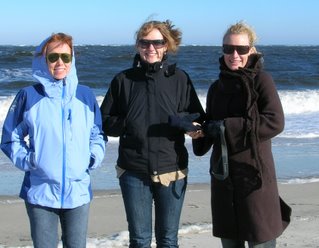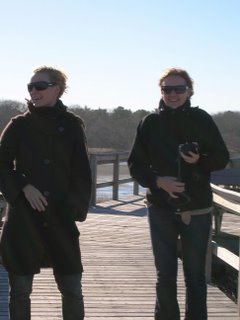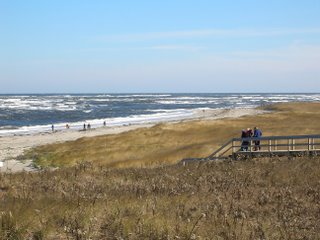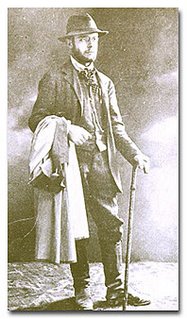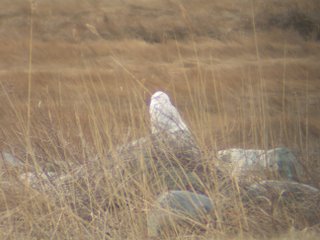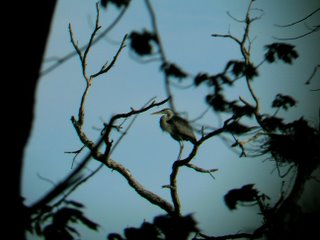
I tell myself, and others, that as a birder, I’m not all that interested in numbers or obsessive ‘listing’, as it’s often called. Simply, listing is making a list of the birds that you’ve seen. Easy enough, no big deal. The most basic form is the ‘life list’ – a list of all bird species that you have ever seen. Many people take it one or two, or ten or twenty, steps further. There are country lists, state lists, city lists, park lists, backyard lists, lists of birds seen on television, bird calls heard on television or radio, birds referred to in books or poetry. Then there are year lists, month lists, behavior lists (singing, feeding, copulating…), the possibilities are endless. This, along with the mental and physical challenge that is a real part of birding, is what makes it kind of a sport, and what spurs many people to bird competitively, trying to rack up as many species as they can, sometimes in conscious competition with other birders (the most famous competitions are the ‘big day’ and the ‘big year’ – you can probably guess what these mean).
As I said, I don’t really consider myself a die-hard lister, most of the time. I have a life list, and I keep a year list, and I keep records of species seen on most outings I take. But I don’t tend to drop what I’m doing in order to chase down one rare bird, and I don’t make much of an effort to tally as many species as I can in a year, or even a lifetime. I’ve got other things I also like to spend time on, though birding is near the top of the list. In this way, I sometimes think of myself as a ‘birdwatcher’ instead of a ‘birder’, being more interested in watching the birds and learning about them, enjoying their beauty and the intricacies of the world they fit into rather than quickly checking them off and moving on to the next.
This is somewhat true of myself, but also somewhat false. Today I found myself birding with moderate fervor, and a specific goal in mind: to reach two hundred species in Massachusetts for the year 2006.
I was successful.
A few weeks ago, I looked over my year checklist and found that, after having birded frequently in the Spring but not having done much since then, I had seen about 180 species in Massachusetts for the year, and remembered telling myself that it would be nice to reach or break 200. So I thought, ‘I can do this.’ Over the next couple weeks I added new birds here and there, some waterfowl species at the Great Meadows National Wildlife Refuge in Concord one weekend, a couple of sparrow species at Nahanton Park in Newton another, meadowlarks (which I had somehow missed in the Spring, despite their lovely song "springtime is here") at MassAudobons Daniel Webster Wildlife Sanctuary last weekend…
This morning my tally stood at 196. One thing I hadn’t done all year, either this Fall or last Winter, was hit Gloucester and Rockport (except for Halibut Point, which I visit frequently, but often to go snorkeling rather than birding). There are a lot of wonderful birds to be had in Gloucester, but it’s not usually my favorite type of birding, as Gloucester is pretty well developed and birding mostly involves driving from site to site, getting out of the car and scanning with binoculars or scope along the way. I generally prefer to pick a location where I can get out and hike or walk for some distance. But like I said, there are good birds to be seen in Gloucester, and some more likely to be seen there than any other place around here.
I started at the Fisherman’s Monument by Gloucester Harbor, and found the wind blowing in from the south quite fiercely, making holding my scope steady or even my binoculars difficult. I found some common eider and red-breasted mergansers, but didn’t have the patience or will to really clamp everything down and scan from there for the uncommon gull species that I’ve seen there before.
So I moved on, and that paid off. At the State Fish Pier the wind was still fierce but it was just a bit more sheltered and I could crouch by my car to steady myself (at least it wasn’t cold). Almost immediately I had a tremendous view of a female scaup, a type of waterfowl, paddling and diving around a floating wooden dock laden with a motionless cadre of double-crested cormorants. There are lesser and there are greater scaup, and with both female and males it is hard to distinguish between the two species, but this bird was close and stayed close as long as I was there, and between the larger bill size and the shape of its head, peaked in front, calling it a greater scaup was fairly easy.
One down!
Next I began to scan gulls, never one of my favorite birding activities. Gulls mostly all look alike, but there are two straightforward things you can do to zoom in on most of the rarer ones in New England, at least in Winter. Look for very small gulls, and look for larger gulls with no dark brown or black markings on their wingtips. These latter are what we call the 'white-wing' gulls, consisting mostly of Iceland and Glaucous Gulls.
Success, and two down! Another great view, this time of an Iceland gull, a mid-sized gull that winters here in modest numbers, amidst the many thousands of ring-billed, herring and great black-backed gulls that abound in these parts, nowhere more so than the Gloucester Harbor.
I then moved south along the eastern shore of Gloucester Harbor to eastern point, where I saw nothing new for the year, but did see a sizable flock of purple sandpipers on the big jetty there, more hordes of gulls, more eider and a small group of the fun-loving buffleheads. Driving out from the point I stopped at Niles Pond where there was a nice flock of bonaparte’s gulls, to my eyes an exceptionally elegant small gull with a fine black bill. I don’t often see these resting so placidly on a pond, usually I’m trying to make out the field marks on a considerable chop out at sea, so I took my time looking at them and making mental notes about plumage and shape.
This was not a new bird for the year, but a friendly birder at the pond reminded me of a rarity that has been haunting that neighborhood the last week or so, a western kingbird, a large flycatcher usually seen, as if you couldn’t guess, in the west, but a rare but regular vagrant across the eastern United States. So I found a parking spot by the beach and walked over to 10 St. Louis Street off of Farrington, and almost immediately found it preening itself high in a bare tree just below a small congregation of house finches. Superficially this bird resembles a great-crested flycatcher, which is easily found in Massachusetts woodlands during the Spring and Summer, but has more dark/light contrast between its head and chest and a noticeable black line across its eye. It also holds itself more horizontally. Despite belonging to the flycatcher family, this one has been eating berries (though with our warm weather so far, I'm sure there are plenty of flies still around. Ticks, too). Plus, one thing you learn, if you see a bird you don’t expect for the time of year, look more closely – it might be a completely different kind of bird that’s completely off your radar, a vagrant from worlds away.
Three down!
The last bird was the most fleeting but the most exciting, as it was a bird I’ve been hoping to catch a glimpse of for years but never have until today, the lovely oddball, the flying football, the dovekie. This is a type of alcid, a group of tubby ocean birds usually draped in bright white and black that normally stay well away from land, diving endlessly for their meals, at least when they're not breeding. These are the penguins of the north, but they can fly, barreling along just above the surface of the water with considerable speed, if not much grace. The dovekie is the smallest alcid in the east, and the tubbiest as well. It really is quite small, and I nearly mistook it for a sandpiper at first from its size, but noticed right away its distinctive shape (football) and coloration (tuxedo) and manner of flying. If it had been off on the horizon, I may not have been able to judge size or shape well enough to really distinguish it from another type of alcid like a razorbill (or I wouldn’t have been able to see it at all), but it was pretty close in, maybe a hundred, hundred and fifty yards out or so, flying south past the Granite Pier in Rockport into the small bay there. I watched it for about six or seven seconds, heart thumping, hoping to see it splash down and get a chance to watch it feed. No such luck. I suddenly lost it, mysteriously, in mid-flight in the sun’s glare on the water. I scanned for maybe fifteen or twenty minutes more, but could not turn it up again, but…it had to be there, somewhere.
No big deal. Four down, and a lifer for my 200th Massachusetts bird species seen in 2006.
Happy Holidays!
(p.s. the photograph has nothing to do with this post. I didn't take any pictures today, but feel that a photograph might help people enjoy my blog, so I included one of my favorite pictures from Costa Rica 1990. It's a picture of a damselfly.)


 Winter finally blew in yesterday, not with a bang, and not exactly with a whimper, but with a modest two-inch snowfall and a chill deep enough to keep the ground white for a couple of days or so. Finally! The warm temperatures of the last month or two have been surprising, even among those of us sold on global warming long ago. I will admit that the warm November was enjoyable, but as it stayed mild well into December it started to seem strange, eerie and finally somewhat frightening, leading me to wonder if the anticipated global or regional climate change will happen not gradually over decades but in some crazy sudden ‘inversion’ that will instantly send our ecosystems spinning. Certainly, it has been an interesting month of birdwatching; from egrets to orioles, many birds have lingered that are normally long gone. I saw a great blue heron today flying across I-95.
Winter finally blew in yesterday, not with a bang, and not exactly with a whimper, but with a modest two-inch snowfall and a chill deep enough to keep the ground white for a couple of days or so. Finally! The warm temperatures of the last month or two have been surprising, even among those of us sold on global warming long ago. I will admit that the warm November was enjoyable, but as it stayed mild well into December it started to seem strange, eerie and finally somewhat frightening, leading me to wonder if the anticipated global or regional climate change will happen not gradually over decades but in some crazy sudden ‘inversion’ that will instantly send our ecosystems spinning. Certainly, it has been an interesting month of birdwatching; from egrets to orioles, many birds have lingered that are normally long gone. I saw a great blue heron today flying across I-95.















